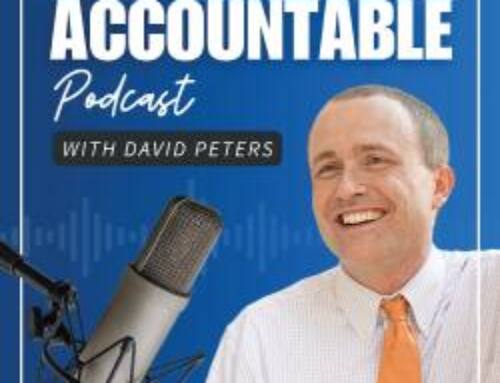UPDATE (March 31): The IRS released a DRAFT form and DRAFT instructions for IRS Form 7200 for employers to use to request advanced payroll tax credits for providing employees with expanded family and medical leave or emergency paid sick leave.
The AICPA will hold two free webcasts on the Families First Coronavirus Response Act. The presenters, including Kristin Esposito, Senior Manager on the AICPA’s Tax Policy & Advocacy Team, will walk through examples of how to calculate the tax credits.
Navigating Change: Tax Implications of the Families First Coronavirus Response Act
- Thursday, April 2 (3 p.m.-4 p.m.)
- Tuesday, April 7, (1 p.m.-2 p.m.)
UPDATE (March 30): The U.S. Department of Labor has updated its FAQs related to the Families First Coronavirus Response Act (FFCRA). This expanded list answers some open questions since its first version of the FAQ and provides more details on previously answered questions.
More guidance on the Families First Act can be accessed at link: https://www.dol.gov/newsroom/releases/whd/whd20200324
The guidance includes a Fact Sheet for Employees, a Fact Sheet for Employers and the Questions and Answers document. The DOL, IRS and Treasury are working together to create additional guidance.
Provided by McGriff Insurance Services (March 23, 2020)
Note: McGriff is the broker for SCACPA’s Association Health Insurance
On March 18, 2020, President Donald Trump signed into law Coronavirus relief legislation, the Families First Coronavirus Response Act (FFCRA), in response to the Coronavirus pandemic. The Act contains two separate divisions requiring employee paid leave for specified purposes related to COVID-19.
Those divisions are:
- the Emergency Family and Medical Leave Expansion Act (EFMLEA), which amends and expands the federal Family Medical Leave Act (FMLA); and
- the Emergency Paid Sick Leave Act (EPSLA), which requires certain employers to provide paid leave to employees who have been affected by the Coronavirus
Click here for a four-page human resources advisory, “New Coronavirus Relief Laws Require Paid Employee Leave.”
In addition, here are key facts regarding the legislation:
• Both the EFMLEA and the EPSLA apply only to those employers with less than 500 employees. Employers are allowed to exclude employees who are health care providers and emergency responders.
• The EFMLEA requires covered employers to provide 12 weeks of FMLA leave for child care reasons related to COVID-19.
• Under the EFMLEA, the leave must be partially compensated after the first 10 days, at two-thirds of an employee’s wage, up to $200 per day or $10,000 total.
• Employees must have been employed with the employer for at least 30 days to qualify for the leave benefits under the EFMLEA. There is no such employment requirement for benefits under the EPSLA.
• The EPSLA requires covered employers to provide 80 hours of paid sick time for specified reasons related to COVID-19. These specified circumstances include quarantine or isolation order for the employee or someone the employee is caring for, or medical advice to self-quarantine; when the employee has symptoms of COVID-19; or when the employee’s child’s school or other child-care facility is closed.
• Under the EPSLA, employees on paid sick leave are to be paid at their regular rate of pay unless caring for a family member. If caring for a family member, employees are entitled to two-thirds their regular rate of pay. The paid sick leave can be capped at $511 per day per employee or $5,110 aggregate if the leave is taken due to an order from the government or instruction from a health care provider for the employee to be isolated or quarantined due to COVID-19 or the employee is experiencing symptoms of COVID-19 and is seeking a medical diagnosis. Paid leave in an amount up to $200 per day per employee or $2,000 aggregate is available if the reason for leave is to care for an individual who is under isolation or quarantine orders from the government or who is experiencing COVID-19 symptoms and is seeking a medical diagnosis, or is caring for a son or daughter whose school has been closed as a COVID-19 precaution or whose childcare provider is unavailable for the same reason. Part-time employees are entitled to a number of hours equal to the number of hours that such employee works, on average, over a two-week period.
• The legislation allows for future regulations which could exempt those businesses with fewer than 50 employees from providing leave for child care reasons should that leave jeopardize business operations.
• The FFCRA provides payroll tax relief for wage payments made for paid sick leave and paid family and medical leave.
Both the EFMLEA and the EPSLA go into effect April 2, 2020. They remain in effect until December 31, 2020.
The information, analyses, opinions and/or recommendations contained herein relating to the impact or the potential impact of coronavirus/COVID-19 on insurance coverage or any insurance policy is not a legal opinion, warranty or guarantee, and should not be relied upon as such. This communication is intended for informational use only. As insurance agents or brokers, we do not have the authority to render legal advice or to make coverage decisions, and you should submit all claims to your insurance carrier for evaluation. Given the on-going and constantly changing situation with respect to the coronavirus/COVID-19 pandemic, this communication does not necessarily reflect the latest information regarding recently-enacted, pending or proposed legislation or guidance that could override, alter or otherwise affect existing insurance coverage. At your discretion, please consult with an attorney at your own expense for specific advice in this regard.



